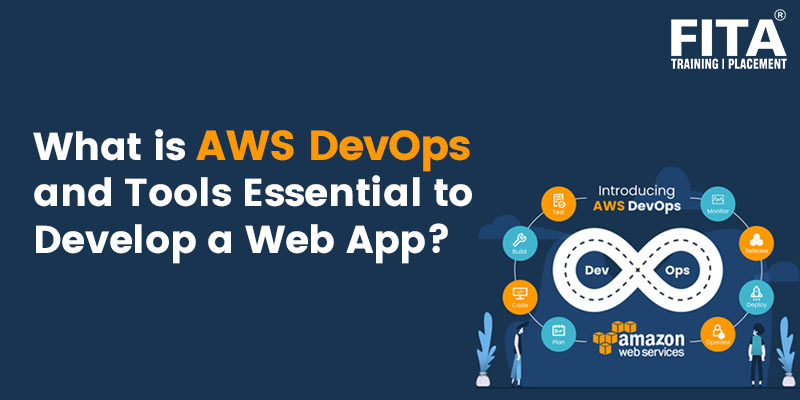
The term “DevOps,” which combines the terms “development” and “operations,” refers to a collection of practices for agile software development. The streamlining of the process allows for a wide range of possibilities.
What is DevOps?
DevOps is the combination of cultural philosophies, practices, and tools that improves an organization’s capacity to quickly deliver applications and services: developing and improving products more quickly than organisations using conventional infrastructure management and software development processes.

Development and operations teams are combined through DevOps to provide software more quickly, accurately, and nimbly. Learn about continuous integration and cloud platforms by joining DevOps Training in Chennai at FITA Academy with our experienced trainers.
What is AWS?

The growing acceptance of cloud computing, customers now have more than a dozen distinct cloud providers to choose from, including Google Cloud, Microsoft Azure, and IBM Cloud Services. Amazon Web Services, sometimes known as AWS, is Amazon’s cloud service provider. All of the features and devops services that you would traditionally find in an internal data centre are available through AWS, including security, compute power, and databases. It is perhaps the biggest cloud service provider out there.Given what we now know about DevOps and AWS,
Let’s examine what AWS DevOps actually is.
So, What is AWS DevOps?
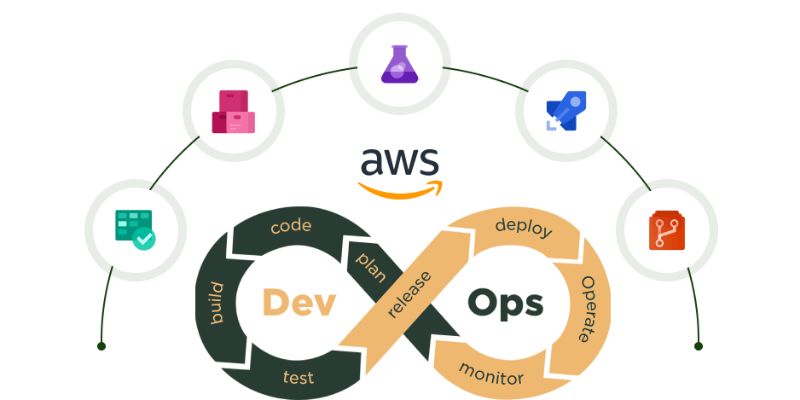
Amazon’s response to applying the DevOps philosophy through the use of its cloud platform, specialised tools, and devops services is AWS DevOps. According to AWS, “DevOps and AWS provide a collection of adaptable devops services aimed at enabling businesses to operate more quickly and reliably build and deliver products.” putting application code into use, automation of software release processes, and monitoring the operation of your infrastructure and application.
Teams of application developers may efficiently deploy continuous integration and delivery (CI/CD) thanks to AWS DevOps. This enables them to automatically create, test, and eventually deploy the application to either on-premises environments or to AWS while securely storing and versioning the application source code.
Cloud computing is primarily divided into three types.
- Software as a Service (SaaS)
- Platform as a Service (PaaS)
- Infrastructure as a Service (IaaS)
AWS is an example of an immediate computing infrastructure that is scalable and totally controlled by the customer, including virtual servers and operating systems (OSes). If you want to design your own algorithms, there are many resources available online, including tutorials. You may also check out AWS tutorials for learning about Amazon Web Services.
Let’s continue our education by learning more about AWS DevOps architecture after receiving an introduction and learning what it is.
AWS DevOps Architecture
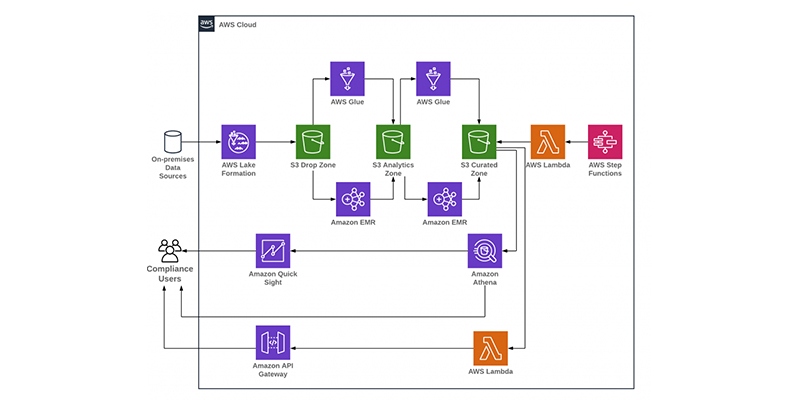
We must dissect the system’s fundamental architecture, using AWS EC2 as our example, in order to have a clearer understanding of what goes into deploying DevOps on AWS. Elastic Compute Cloud, or EC2, allows customers to manage virtual machines and the resources they need from a single interface. Automation makes the entire process more flexible and economical by allowing IT managers to make sure that resources can be scaled to meet organisational needs.
Join for AWS Training in Pondicherry in and start learning from basics about cloud computing and AWS core services
Load balancing
Load balancing is a common element in web application architecture. This virtual network device separates EC2 traffic into different many web server resources that are accessible, and that may be expanded or contracted in response to demand for traffic. To make this, aws tools provides the Elastic Load Balancing service.
Amazon CloudFront
This service distributes content, including static, streaming, and dynamic types, such as websites. It is interoperable with clouds from other providers and is designed to work with other aws tools.
Amazon Security Group
Security is a top priority because of the surge in hacking events. By acting as an inbound network firewall, this functionality. Customers must choose the approved protocols, ports, and source IP ranges in order to access EC2. Each EC2 instance can have one or more security groups assigned to it, and each one routes authorised traffic to the proper instance.
Elastic Caches
The cloud’s memory cache is controlled via this web service. Elastic caches improve performance and scalability by storing frequently used data, which lessens the load on the services.
Amazon Relational Database Service (RDS)
A cloud-based relational database’s setup, use, and scalability are made simpler by the RDS service. It provides a readily scalable, affordable method of working with relational databases while managing routine database administration duties. The databases Amazon Aurora, MariaDB, Microsoft SQL Server, MySQL, Oracle, and PostgreSQL are all supported by RDS at the moment.
Amazon’s Simple Storage Service (S3)
There are two ways to access, back up, and store the data and other assets used by web applications on the AWS cloud. Users may handle any quantity of data with S3’s straightforward user interface at any time and from any location online. Users keep data in buckets as objects. These items can then be read, added to, deleted, or accessed as necessary.
Amazon Elastic Block Store (EBS)
Managing data partitions and application logs is made easier with the aid of this high-performance block storage system. When they require immediate access and long-term persistence, they turn to EBS. Databases, file systems, and other applications that require access to raw, block-level storage that is not formatted and granular updates should use EBS volumes as their primary storage.
Amazon Auto Scaling: Users of this service can grow or decrease the number of servers in their capacity groups as necessary.
After going through the architecture, let’s go on to learn about the various AWS DevOps tools.
AWS DevOps Tools
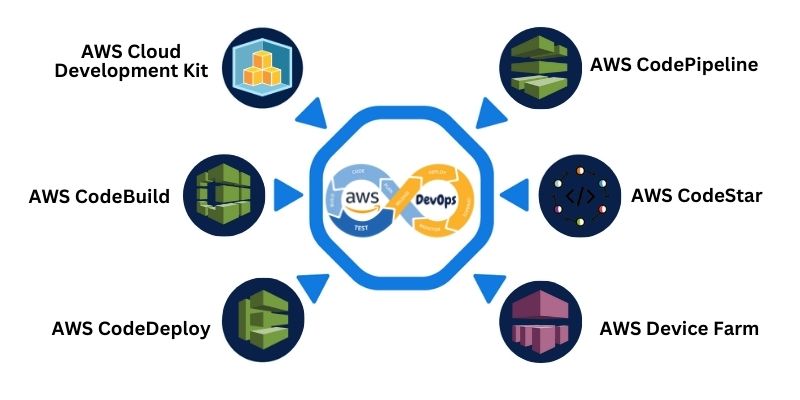
AWS DevOps has a number of tools and features for creating and deploying cloud-based applications.A list of some of the more well-known tools can be seen below.
Join for AWS Training in Pune and start learning from basics about AWS management and infrastructure
AWS Cloud Development Kit
CodeBuild is an integration service that handles several builds and scales continuously. With continuous scaling, users are able to write and test programmes.
AWS CodeBuild
An integration service called CodeBuild handles several builds and scales continuously. With continuous scaling, users are able to write and test programs.
AWS CodeDeploy
This programme automates the distribution of software to a variety of cloud computing platforms, including any other on-premises servers you choose, as well as Amazon EC2, AWS Fargate, and AWS Lambda.
AWS CodePipeline
Your continuously delivered code is automated using this DevOps solution for quick and precise changes.
AWS CodeStar
For DevOps on AWS, CodeStar is a particularly valuable tool. It provides an easy-to-use user interface for customers to create, build, and deploy apps on AWS. A whole continuous delivery toolchain can be set up in a matter of minutes.
AWS Device Farm
With the help of this tool, developers may improve the quality of their web and mobile apps, which are more popular in today’s market, by testing them on actual mobile phones and computer browsers hosted in the AWS Cloud. Multiple platforms and browsers can even be used simultaneously for testing purposes!
Next, let’s examine some aws devops services and best practices.
AWS DevOps Best Practices
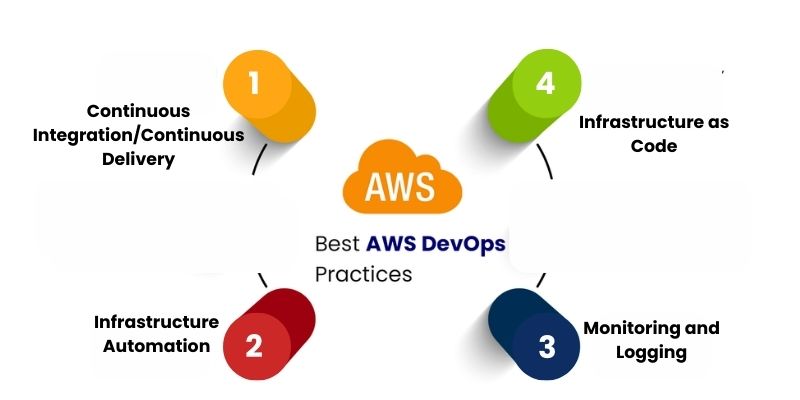
App developers should adhere to these best practises if they want to successfully integrate aws tools with DevOps.
Continuous Integration/Continuous Delivery
The CI/CD pipelines are the heart and soul of the DevOps methodology. Continuous integration is the process of continuously validating a project by adding code updates at predetermined intervals. By deploying code automatically in the production environment continuous delivery expands on CI.
Infrastructure Automation
This method focuses on writing high-quality code and the requirement to automatically test it on a regular basis.
Infrastructure as Code
By creating a machine- and human-readable template file, this procedure manages and provisions your AWS cloud resources. The go-to tool for AWS cloud development users is the AWS CloudFormation tool.
Monitoring and Logging
To ensure that events are triggered at the appropriate times and to address anything that isn’t working properly, every system activity needs to be tracked and logged.
Communication and Collaboration: Every team and department must support the project and be kept up to date. A venue for valuable feedback that could influence the project’s direction must also exist.
How to Get Better Acquainted With DevOps and AWS
There is much more to discover about the cloud service provider aws tools and the DevOps concept. The more you know, the better, especially given how both ideas are improving more significantly in the current app development market.
Do You Want to Become a DevOps Practitioner?
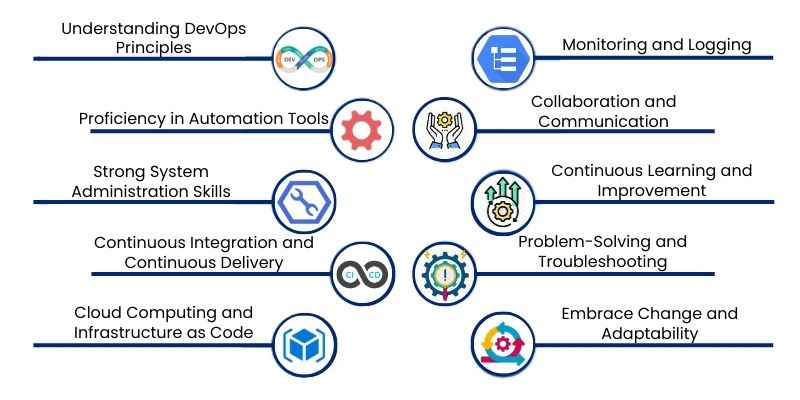
Understanding DevOps Principles
Gain a deep understanding of the core principles and concepts of DevOps, such as collaboration, automation, continuous integration, continuous delivery, and continuous monitoring. Recognise the value of breaking down silos between development and operations teams to foster a culture of collaboration and shared responsibility.
Proficiency in Automation Tools
Become proficient in popular DevOps automation tools such as configuration management tools (e.g., Ansible, Chef, Puppet), infrastructure-as-code tools (e.g., Terraform, CloudFormation), version control systems (e.g., Git), and continuous integration/continuous delivery (CI/CD) tools (e.g., Jenkins, CircleCI, GitLab CI/CD). These tools enable the automation and management of infrastructure, deployments, and software delivery pipelines.
Strong System Administration Skills
Develop a solid understanding of system administration concepts, including operating systems (e.g., Linux, Windows), networking, security, and virtualisation. Proficiency in managing cloud platforms, such as AWS, Azure, or Google Cloud, is highly beneficial.
Continuous Integration and Continuous Delivery (CI/CD)
Obtain practical knowledge of establishing CI/CD pipelines to automate the build, testing, and deployment processes. Understand concepts such as version control, build automation, artefact repositories, unit testing, integration testing, and deployment strategies (e.g., blue/green deployments and canary releases).
Cloud Computing and Infrastructure as Code (IaC)
Acquire knowledge of cloud computing concepts and providers, such as AWS, Azure, or Google Cloud. Understand how to provision and manage infrastructure resources programmatically using infrastructure-as-code tools, enabling reproducibility, scalability, and version control of infrastructure configurations.
Monitoring and Logging
Learn how to implement effective monitoring and logging strategies to gain insights into system performance, availability, and issues. Familiarise yourself with monitoring tools like Nagios, Prometheus, or Datadog, as well as log aggregation tools like ELK Stack (Elasticsearch, Logstash, Kibana) or Splunk.
Collaboration and Communication
DevOps emphasises collaboration and effective communication across teams. Develop strong interpersonal and communication skills to work closely with development, operations, and other cross-functional teams. Understand the importance of empathy, teamwork, and transparency in fostering a DevOps culture.
Continuous Learning and Improvement
DevOps is continuously evolving, so cultivate a mindset of continuous learning and improvement. Stay updated with industry trends, attend conferences, participate in webinars, and engage with the DevOps community to exchange knowledge and ideas.
Problem-Solving and Troubleshooting
Develop strong problem-solving and troubleshooting skills to identify and resolve issues quickly and efficiently. Understand how to perform root cause analysis and implement effective solutions to prevent future incidents.
Join DevOps Training in Bangalore and understand about Scripting and its collaboration
Embrace Change and Adaptability
Embrace a mindset of embracing change and adaptability. DevOps requires individuals to be flexible, open to new technologies, and comfortable with taking on different roles and responsibilities as required by the team or organisation.
